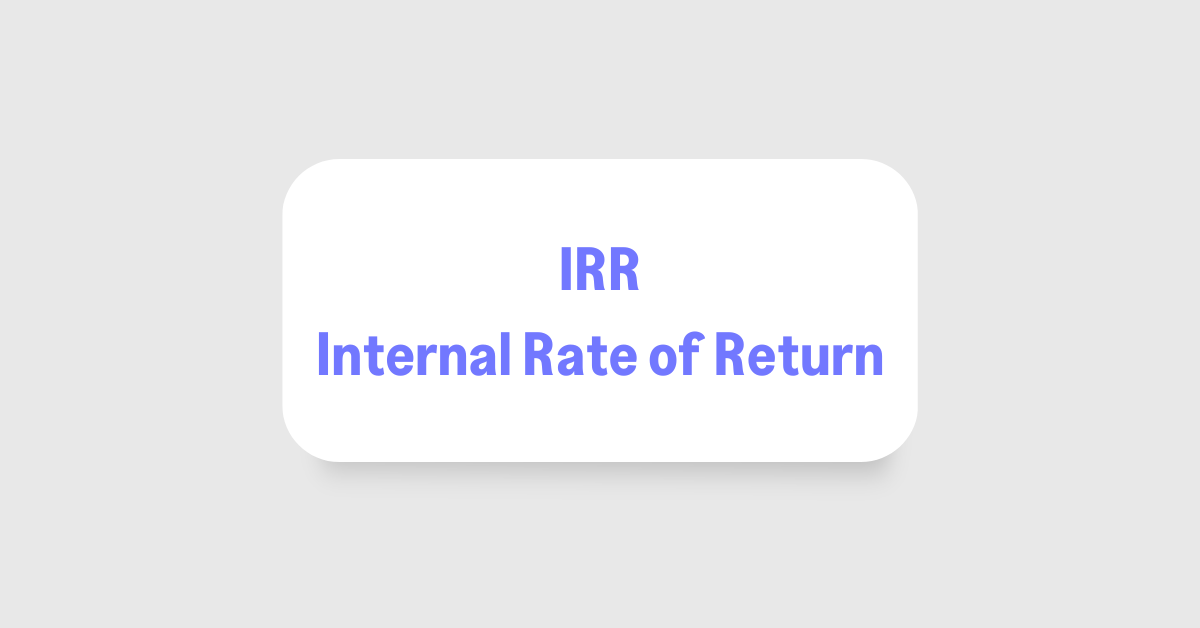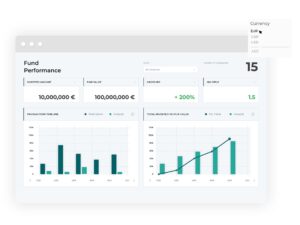
Table of Contents
Venture capitalists, angel investors, and even everyday people use a variety of criteria to help them decide what to invest in. On one hand, you might have a good feeling about a company and feel aligned with its values. On the other hand, companies and investors use many metrics, including payback period analysis, return on investment (ROI), and internal rate of return (IRR) to evaluate a potential investment.
The internal rate of return (IRR) is a metric that helps investors predict how profitable an investment will be. In other words, an IRR is the rate of growth that investment is expected to experience.
There’s also the IRR rule, which further assists investors in deciding whether or not to pursue a project. To do this, it compares the IRR with the Required Rate of Return (RRR). The RRR is usually the cost of capital. If the IRR is greater than the minimum RRR, it’s a relatively good indication to pursue the investment. However, if the IRR is lower than the RRR, it might be better to reject that investment and consider other projects.

In this formula, the net present value (NPV) must be equal to zero.
It’s important to note however that formula doesn’t allow IRR to be calculated analytically, you should calculate IRR iteratively using a portfolio management software, or through excel. Generally, experts don’t recommend you try calculating this formula on your own. It’s complex and is almost always calculated electronically.
You might be thinking, “What is an IRR” and how is it different from other metrics, like Return on Investment (ROI). An IRR tells you the annual growth you’ll experience with your investment in a project. Contrarily, ROI tells you how much total growth you’ll experience throughout the course of a project.
Particularly helpful in analyzing investment returns, IRR helps companies predict yearly returns, especially in scenarios where cash flow varies over time.
Net IRR is the return after accounting for fees and costs. Gross IRR is the return of the investment, not taking into account fees and costs.
Gross IRR is always higher than Net IRR. In the rare instance that a Venture Capital or Private Equity fund does not have a management fee, no carry or expenses, the Gross and Net IRR are equal.
According to ILPA, Net IRR is the dollar-weighted internal rate of return, net of management fees and carried interest generated by an investment in the fund. The return considers the daily timing of all cash flows and cumulative fair stated value, as of the end of the reported period.
Gross IRR is the IRR based upon the performance of the investments, not taking into account management fees or carried interest.
Most venture capital firms aim for an IRR of 20% or higher. However, it’s important to consider the length of a project when evaluating an IRR. Longer-term projects could result in more returns, even if the IRR is lower.
It’s important to remember that IRR is useful for some scenarios, like capital budgeting, but not all scenarios. For venture capitalists, capital budgeting helps to evaluate the value of their prospective investments.
Projects with Different Lengths
IRR can also be misleading when comparing projects or investments of different lengths. For example, a project lasting 5 years will have a higher IRR than a project lasting 15 years, even though the longer-term project might result in higher returns over time. In comparing projects with different lengths, you might benefit from using the Return-On-Investment (ROI) metric instead.
Don’t Use IRR Alone
The IRR metric isn’t intended to be used alone in determining an estimated return. Because the IRR is only an estimated figure, it’s possible that it and the net present value (NPV) could vary greatly from the actual result. Experts recommend combining an IRR calculation with scenario analysis and with a weighted cost of capital (WACC) analysis. Using an IRR as the sole metric could result in a poor investment decision.
So, an IRR is meant to be a factor in evaluating a project’s return rate, but not the only factor. Some investors use IRR in conjunction with other trade-offs when evaluating an investment.
With so many metrics to consider, it can be difficult to compare potential investments. Portfolio management software helps venture capitalists and investors compare different projects with ease. Interested in calculating IRR and other metrics to assess potential investments? Get started now by scheduling a call with us.


Get holistic insights and make decisions from a unified data source.